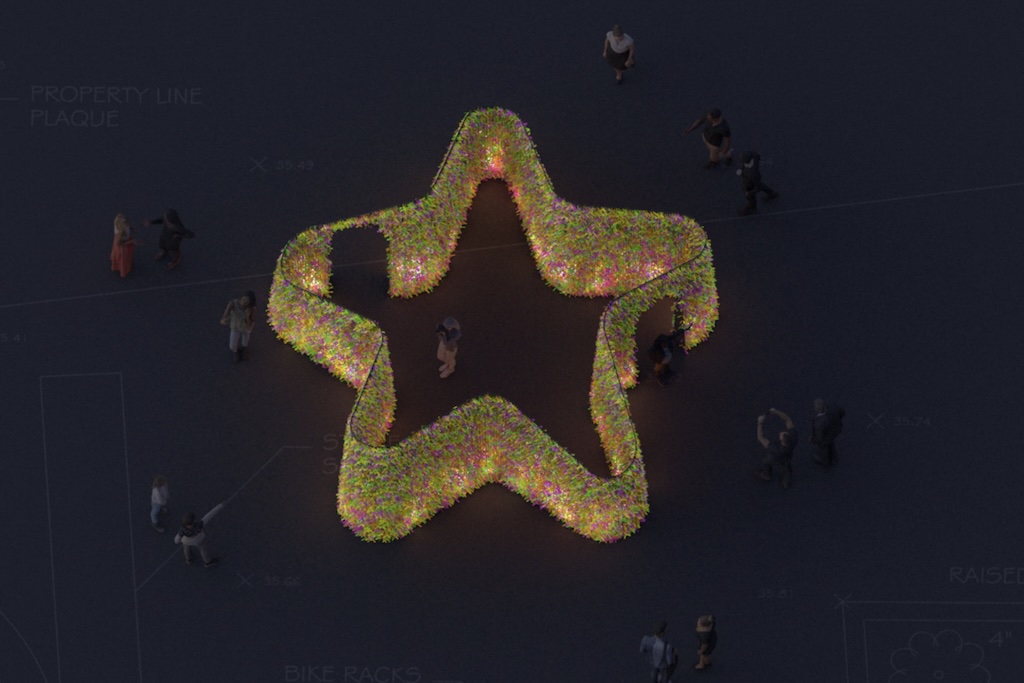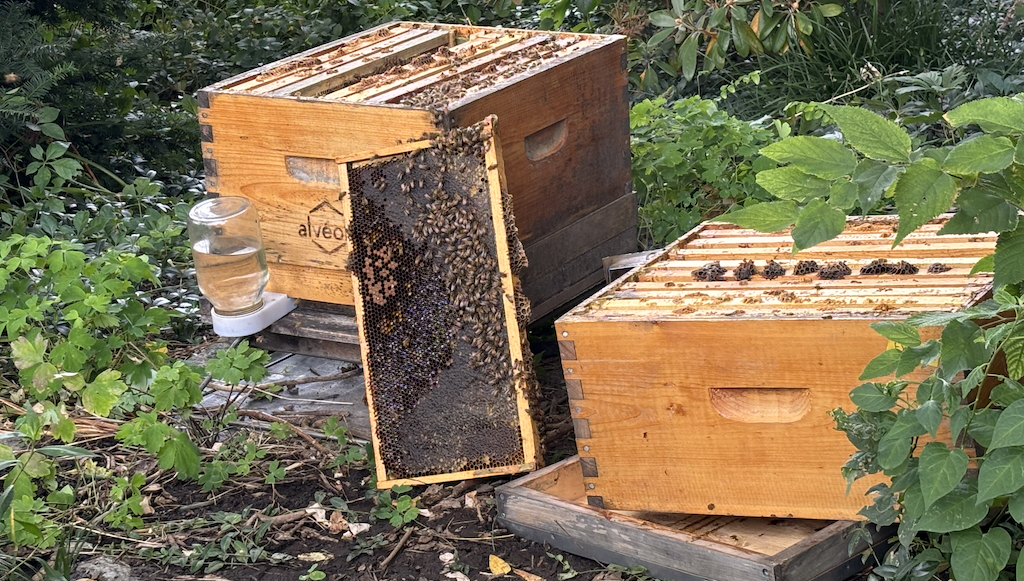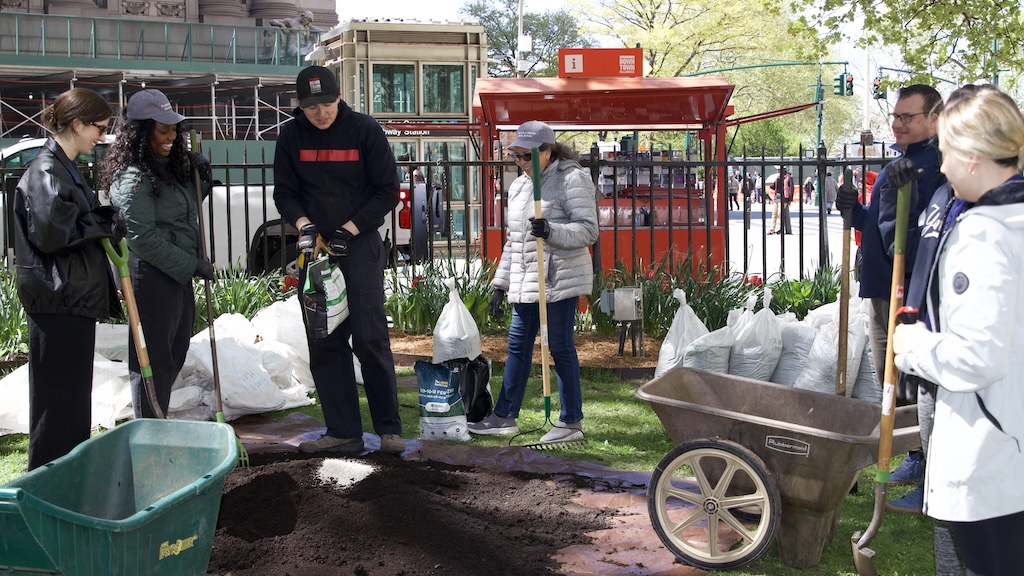City Hall Park Sculpture “Attrition” Explores Relationship Between Nature and Humanity
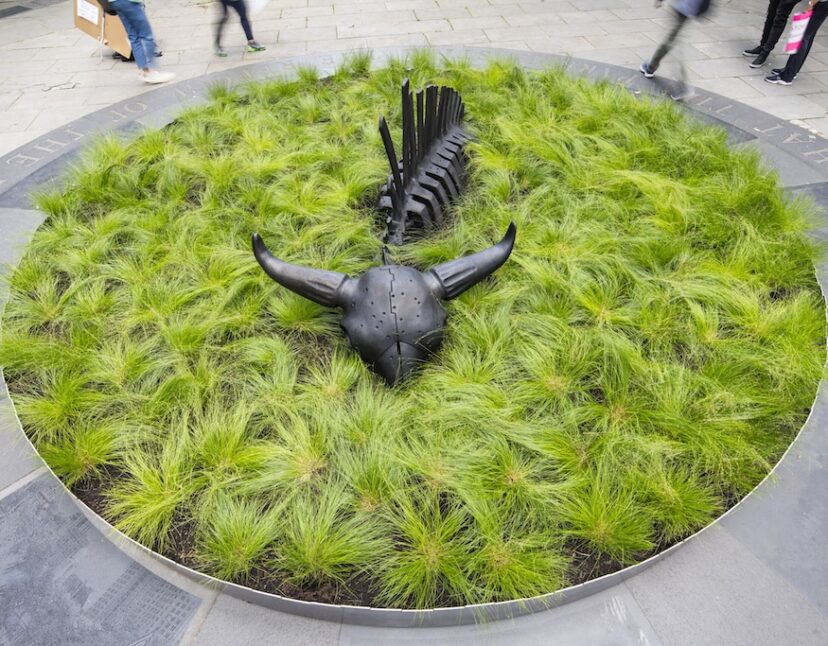
If you’ve been to the south end of City Hall Park recently, you’ve likely noticed something unusual, even for New York City — a 10-foot long skeletal bison sculpture embedded in a standalone circle of native grass is hard to miss. “Attrition” is an art exhibition by artist Cannupa Hanska Luger, curated by the Public Art Fund, on view from June 5 to November 17.
Katerina Stathopoulou, Public Art Fund adjunct curator, says she’s been a fan of Luger’s work (which typically focuses on environmental and social justice topics) for some time, and Luger was drawn to the civic history and location of City Hall Park. It was a natural pairing for a partnership.
Luger, an Indigenous artist, has used bison as a theme in his artwork for around 15 years. The animal, sacred in Indigenous cultures, has had a violent history dating back to the 1800s when they were systemically hunted by white settlers during which period it’s estimated that the bison population dwindled from 16 million to 1,500, leaving a devastating impact on Native communities and the environment as a whole.
During this time, the bones were often burnt as a means of disposal, and the ashes used in the production of calcium carbonate for steel. Stathopoulou told us that, “as a direct link to New York City” it’s likely that many turn-of-the-century skyscrapers include remnants of bison bones. Because of this, Luger used an ash black patina on his work, which is also meant to purposefully oxidize and evolve over the course of the show. By the end of the exhibition’s run in November, it should take on a deep orange color, naturally changing colors with the fall foliage, according to Stathopoulou.
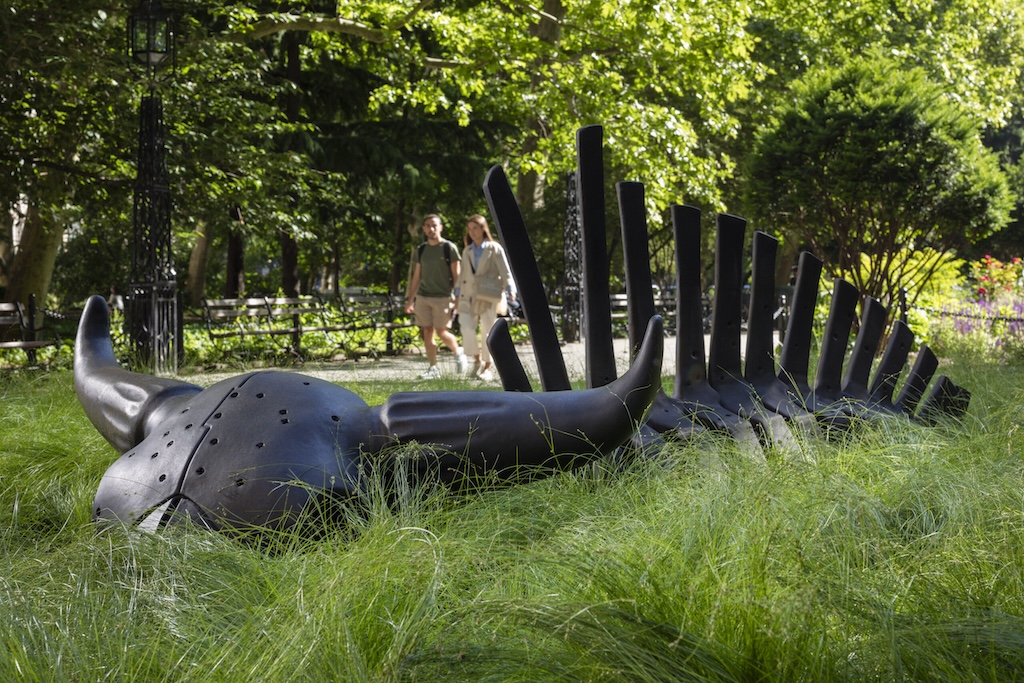
The Lower Manhattan location was important to the artist for more reasons than one. What is now Broadway, along the western border of the park, used to be a Native American trail that spanned the length of Manhattan. The north side of City Hall Park is within the archaeological African Burial Ground historic district: “This idea of letting people reimagine what’s underneath the ground we walk on was very important,” Stathopolou said, emphasizing that this was particularly essential on the pathway to City Hall.
For Luger, “Attrition” signifies Indigenous resilience and sovereignty, but also a regeneration of the revered animal. After years of various conservation efforts, it is estimated there are about 20,000 wild bison in the U.S. today.
Join the Public Art Fund to hear Cannupa Hanska Luger speak about “Attrition” on October 30 from 6:30 p.m. to 7:30 p.m. at the Cooper Union.
photos: Nicholas Knight, courtesy of Public Art Fund, NY
Tags: Public Art Fund